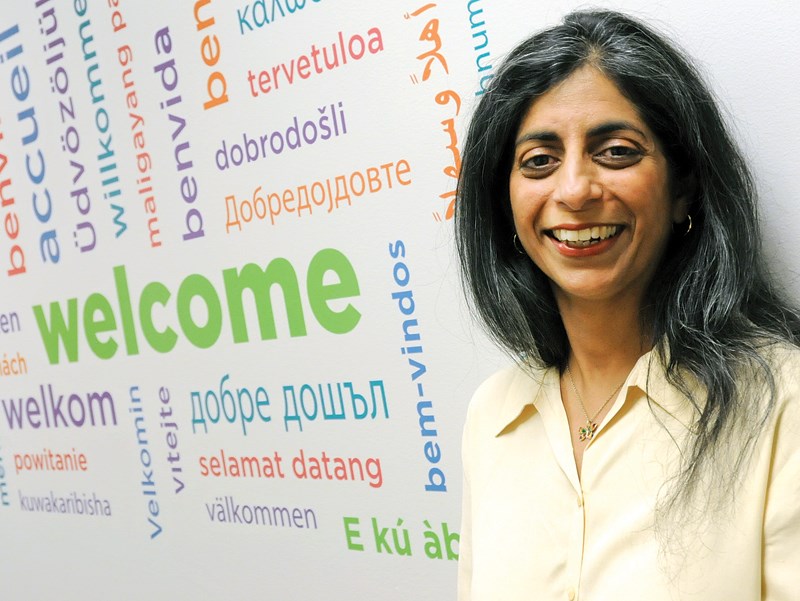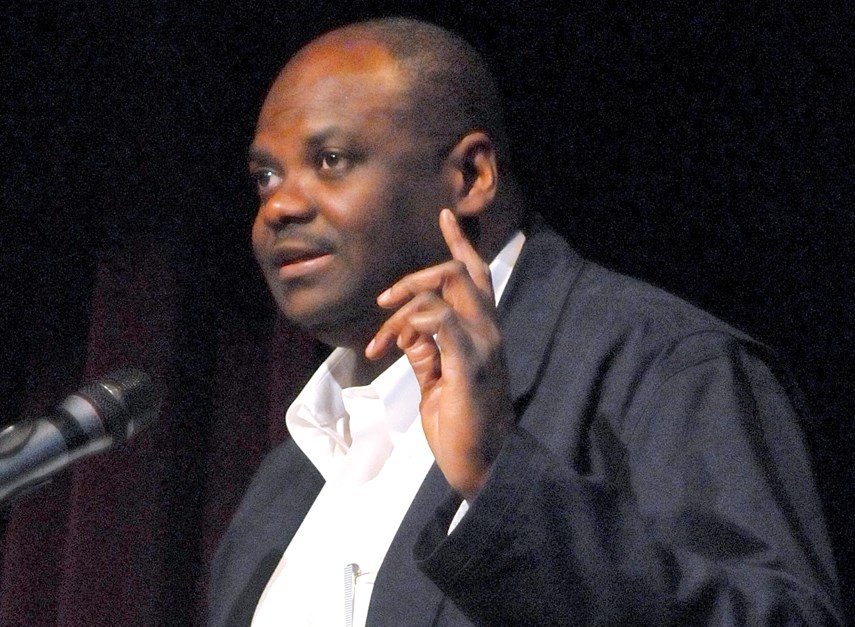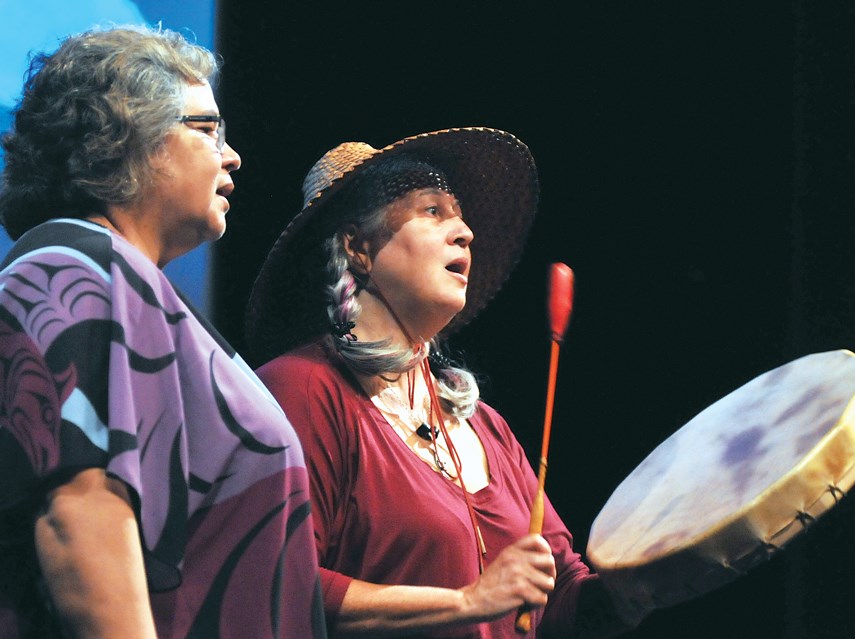As Meharoona Ghani rode the 240 bus past the Trump tower in downtown Vancouver in January this year, she could feel something had changed.
Donald Trump was soon to be inaugurated as president, ushered into power by the so-called alt-right – conservatives who had grown tired of keeping their racist views a secret. For Ghani, the manager of community connections and diversity at the North Shore Multicultural Society, it brought back 40-year-old memories of being surrounded by kids in a small town in B.C. and abused for her background.
At the end of January, a white supremacist was accused of shooting up a Quebec City mosque, killing six and wounding 19.
And there had been incidents of swastikas and racial slurs spray-painted around the North Shore.
Ghani probed deeper and held small meetings with her contacts in the North Shore Immigrant Inclusion Partnership to listen to the experiences other people were having. There she heard stories about Muslim youth who felt bullied in North Vancouver schools, reports from white residents who witnessed discriminatory behaviour in public but didn’t know how to respond.
“Bottom line, it’s fear,” Ghani said to a packed house at West Vancouver’s Kay Meek Centre Thursday night.

With support from NSIIP, Ghani organized Acting Against Racism, a forum intended to acknowledge the systemic and overt racism that still plagues society and to cultivate ways to turn back the tide.
The event’s panel brought an array of expertise and backgrounds including Sunera Thobani, a professor in the department of Asian studies at the Institute for Gender, Race, Sexuality and Social Justice at the University of British Columbia. Thobani is an expert in Islamophobia, which has been on the rise.
A report from Statistics Canada found that in 2015, hate crimes against Muslims had increased by 60 per cent in Canada, the majority of which targeted Muslim women, she noted. But, there is a more systemic mistrust of Muslims in Canadian society.
“While extreme forms of violence such as hate crimes are rightfully condemned as violations of Canadian law, and even Canadian … liberal values of tolerance, multiculturalism and democratic freedom, the everyday forms of racism that are connected to these extremist versions are overlooked and they continue to be either justified or normalized,” she said.
Some forms of racism are still sanctioned by the state, Thobani noted, included surveillance and racial profiling of Muslims.
The media bears much of the responsibility for aiding the vilification of Muslims by repeating and amplifying hurtful, inaccurate depictions, she said.
Josh Patterson, executive director of the B.C. Civil Liberties Association, said his group too has seen the reinvigoration of overtly racist, anti-immigrant and Islamophobic views, including physical violence and terrorism.
The reaction by the larger white community on social media to high-profile events like the white supremacist rally in Charlottesville, Va., is often one of shock, which he said may be an indication of naiveté.
“I think white people are surprised because we don’t go through our days experiencing subtle and overt racism, large and small. There is an amount of safety that’s built into our experience and into our daily lives,” he said.
While many are quick to dismiss the grievances people of colour have with the way they and their ancestors have been treated, white people – even those who proclaim to not be racist – must listen, he said.
“Relationships cannot be fixed when only one party in the relationship recognizes there is a problem and wants to do something about the problem . . . and the other party in the relationship just says ‘That’s history’ or ‘That’s old news’ or ‘That doesn’t affect me.’ You just can’t fix it that way,” he said.
Despite the reinvigoration of hate, Squamish Nation member Charlene Seward said these people can be reached. Seward is the community engagement manager for Reconciliation Canada, a group that works to bridge the gap in understanding and compassion after Canada’s treatment of Aboriginal groups – genocide, dispossession of lands and the forced removal of 150,000 Indigenous children from their families to be taken to residential schools. The trauma has transcended generations. Seward’s work often involves hosting workshops for people on the subject of reconciliation, which she says are transformative.
“I see people move from bias and prejudice into a posture of openness and it’s so inspiring. I believe that we will create a better future. I don’t think there is any other option,” she said. “If I could give anything for all of you to learn, it would be to please model reconciliation to your children, in your families, in your communities. Children only know what we teach them and if we’re teaching them hate and discrimination, then they’re going to pass that on to other children in their schools,” she said.
The nexus of children and racism was sadly poignant for one mother who attended the forum. Following an incident on the playground at her seven-year-old son’s school, the woman lobbied administrators to allow her to come speak during Black History Month.
Handel K. Wright, director of the Centre for Culture, Identity and Education at UBC, said it should be the work of the school to address racism among its kids, but commended the woman for her initiative.
“Students, very early, are ready to hear these messages,” he said. “Part of how people try to avoid this is to say kids are too young to raise those issues. Well, if people are making racist taunts, those issues are already there,” he said.

More than likely, everyone harbours some discriminatory thoughts, said Marcus Wong, a board member with the West Vancouver Police Board and North Shore Multicultural Society, so that makes it critical to confront those thoughts among our peers.
“I believe that everybody is essentially racist to some degree. There’s nobody who is 100 per cent pure, so I believe having the discussion is incredibly important,” he said.
Wong said he too finds his “belonging” in Canada questioned, despite being a fifth generation Canadian, fluent in both official languages.
“The important thing to remember is that this essentially is not just my community. It’s not just your community. This is our community. If we truly want to make this community and this country a better place ... then I would say we have a moral imperative to address issues such a racism, discrimination and prejudice because without that, then who are we? We are no better than the people we point fingers at.”
Shelina Neallani, a North Vancouver lawyer and mediator, teaches practical skills to confront incidents of racism appropriately. That could mean picking the right emotional tone, body language and words to either de-escalate or outright condemn an act of racism.
“There is no playbook. There is no how-to when you’re in a situation where you’re either observing or experiencing racism,” she said. “The key, I think, is instead of reacting, respond. That means to have a thoughtful and purposeful response to what’s happening.”
In closing, Wright urged attendees to remember that the image of harmonious multiculturalism that Canadians so like to congratulate themselves on may not reflect the lived realities for people of colour. And that it will take the work of many diverse groups of people supporting each other to make that image a reality for all.
“This is not the time for isolated work. This is not the time when women do feminism, black people do black work. This is the time for coalition. This is the time for alliances. This is the time for working together,” he said, to cheers from the audience. “This is the time to hold Canada’s feet to the fire of the very image that it portrays. Let us make Canada live up to what it claims that it’s all about.”



